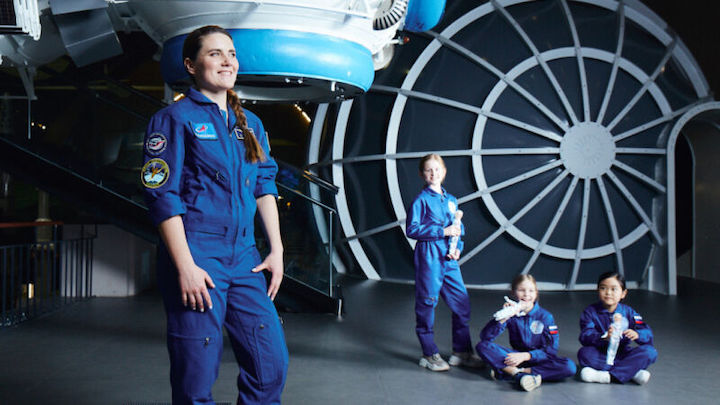3.06.2022
"I think it's the right thing to do."

Anna Kikina will be just the fifth Russian woman to go to space.
More than three months after the invasion of Ukraine, it is clear from the actions of Russia, the United States, and the International Space Station's other partners that they would like to keep the jointly operated facility flying above Earth-bound tensions.
But one of the biggest outstanding questions is whether the manner in which astronauts and cosmonauts reach the space station will change. Prior to the outbreak of hostilities, NASA and Russia had been planning to initiate "seat swaps" this fall, with a cosmonaut, Anna Kikina, flying on SpaceX's Crew Dragon vehicle for the first time.
Presently, Kikina is scheduled to launch as part of the "Crew 5" mission in September, which will be commanded by NASA astronaut Nicole Mann. Around the same time, NASA astronaut Frank Rubio would launch on the Soyuz MS-22 mission, commanded by Sergei Prokopyev.
However, a key NASA official told Ars that there is still no official word on whether the swap will happen. The decision rests with diplomats in Moscow and Washington, DC, and should be finalized in the coming weeks.
"It's a process," said Joel Montalbano, the Houston-based program manager of the International Space Station. "Roscosmos needs to get agreement from the Ministry of Foreign Affairs, and then they go to their Prime Minister. After that, the agreement comes to the US State Department for approval."
Montalbano said he is eager to see the seat swap happen because it should help to solidify the partnership that has been shaken by Russia's invasion of Ukraine. "I'm pushing," he said. "I think it's the right thing to do, just because it's happened with similar vehicles. But we'll have to see."
A Russian cosmonaut, Sergei Krikalev, was the first Russian to fly on a US space vehicle, riding on board NASA's space shuttle in 1994. A year later, NASA astronaut Norman Thagard flew to the Mir space station on a Soyuz vehicle. Following the retirement of the space shuttle in 2011, NASA had to rely on Russia for transportation to the space station. Although it eventually charged NASA about $90 million for a seat, Russia held up its end of the bargain by providing reliable transportation. NASA no longer needs Russia for this, however, with Crew Dragon coming online as an operational spacecraft.
A seat swap would be beneficial for reasons beyond diplomacy. By flying astronauts on Russian vehicles, NASA can ensure that it always has at least one Western crew member onboard the station to keep its side of the facility operational during handovers from one crew to the next.
The tensions in Ukraine, however, have raised the stakes. Will Russia want the optics of one of its cosmonauts launching on a US rocket? And will the US State Department want similar optics, with NASA astronauts training near Moscow and launching from Russia's main spaceport in Kazakhstan?
For now, the answer appears to be a solid maybe. To that end, Montalbano said that training continues for a potential seat swap. Kikina was in Houston last week, preparing for her upcoming mission. She is expected to return in mid-June, he said, to work both in Houston and at SpaceX's training facilities in Hawthorne, California.
Quelle: arsTechnica
